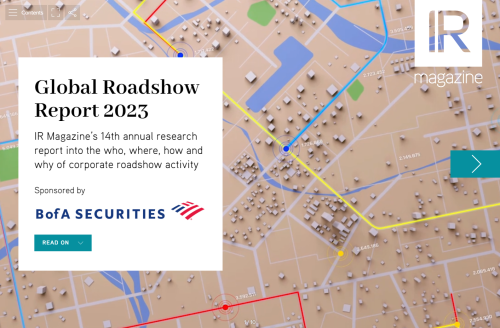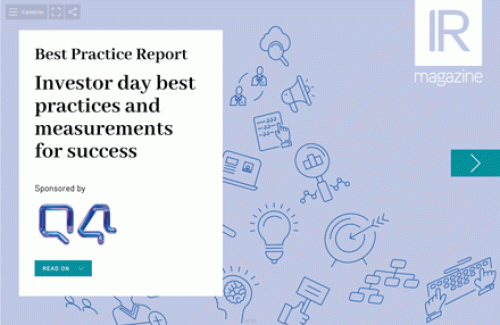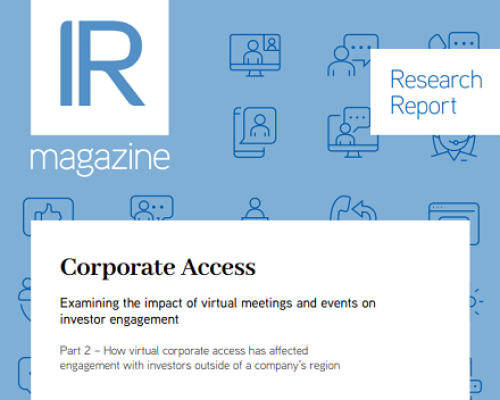With the first-quarter earnings season behind us, many of our clients are focused on investor meetings and marketing once again. To prepare for re-engagement, we are helping clients refresh their investment stories, develop investor targeting strategies that reflect the current environment and valuations, and deal with the shift to virtual investor meetings.
Whether your company had a strong growth story in early March and is now a value play or happens to be in a sector that is doing well amid the pandemic, all companies need to refresh their investor messaging and materials to reflect the reality of a Covid-19 world. Successful investor messaging will:
- Make a compelling case for why your company is one to own in this environment. Focus on the positive and enduring aspects of your investment thesis. Explain how your mission remains unchanged and how you are positioned to capture future opportunities post-Covid-19
- Highlight recession-resilient characteristics, a proven ability to adapt to change, strong financial resources and liquidity, and opportunities to capitalize on competitive disruption
- Stress near-term defensive qualities that position the company to withstand a severe and potentially long contraction. With much of the US beginning to slowly reopen, provide details on how this impacts your company and prospects
- Emphasize prior experience in managing through economic cycles and how that informs your approach to Covid-19. When possible, provide data that makes the case
- Continue to stress a commitment to ESG and how the company is serving all stakeholders amid the challenges created by Covid-19.
Even the best corporate messaging will only have an impact if it reaches the right audiences. To that end, we have been working with our clients to adapt existing investor outreach plans to the new reality. In some cases, a rapidly growing company may now find itself in the value investment category, so it is important to reframe your company’s story to appeal to those most likely to invest now.
And we cannot emphasize enough that now is the time to get in front of the right investors – don’t wait until the dust has settled. They are looking for new ideas that have long-term potential, and meeting with management will help them evaluate the risk/reward.
Recently, we had the opportunity to discuss this topic with a veteran corporate access professional and we want to share some of his interesting observations and insights:
- Virtual events (conferences, non-deal roadshows and annual shareholder meetings) will be the norm at least through the summer and likely beyond. While companies may be willing to travel to see investors, investment firms may be unwilling to entertain groups of visitors in their offices for some time to come
- There is tremendous demand from investors to hear directly from company management about fallout from the pandemic, business trends and their thoughts on what a recovery might look like
- Many firms have not cancelled any events – conferences or non-deal roadshows – and continue to schedule meetings of all kinds in a virtual format. In a telling example, more than 1,300 investors and industry leaders have registered for a virtual version of REITweek, the largest annual investor conference for the real estate investment trust sector
- Virtual non-deal roadshows are experiencing greater participation from portfolio managers, who can now ‘attend’ conferences and meetings with management while at their desks, enabling them to keep an eye on the market and their portfolios at the same time
- Virtual non-deal roadshows have many advantages: they allow companies to cover considerably more ground geographically and to make the most efficient use of management’s time. For example, a day of meetings could include investors in New York City, Boston, Toronto, Los Angeles and Chicago all on the same day, with time left over for the family. ‘Virtuality’ also makes it possible – and for the first time, easy and time-efficient – to see investors in cities outside well-traveled stomping grounds. Companies armed with a focused targeting strategy can make a lot of headway getting airtime with investors located in Tier 2, 3 and 4 cities off the (formerly) well-beaten path
- CEOs, CFOs and IR teams are taking note of the substantial time, money and energy saved by avoiding the rigors of travel typically associated with traditional non-deal roadshows. Companies are reallocating time and funding to other high-value projects such as refreshing their investment story and materials or launching an ESG initiative. Further, the extreme efficiency of virtual non-deal roadshows will likely allow for more of them each quarter, as the bulk of time is used for meeting with investors, rather than traversing time zones to get to their offices
- While there are lots of advantages to eliminating the travel element of investor meetings that management teams and IROs will appreciate – no more stressing over cancelled flights, bad weather, AWOL livery cars and other things beyond their control – virtual meetings are not without their own challenges. High on the list is technology, which must be tested and compatible. In some cases, companies or investors have defaulted to old-fashioned, almost-always-reliable telephone calls, and those can work well, too
- That said, investments are still made the old-fashioned way, and in-person investor meetings will return over time. Investors will still want to build those personal relationships with company executives that are best achieved by face-to-face engagement. Nevertheless, virtual meetings are here to stay. Investors and company executives now know that virtual meetings work, are time-efficient and expand the reach of potential connections.
According to a recent survey by IHS Markit, less than half of IR professionals had participated in virtual investor meetings prior to the Covid-19 pandemic, but nearly 90 percent plan to add virtual events over the next year. Finally, best practices are emerging around successful virtual meetings, beyond wearing pants and sitting up straight. Most important is presenting your team as if you are face to face, being fully prepared and having the best technology possible – all essential in making the right impression as an adaptable and buttoned-down management team.
Moira Conlon is president of Financial Profiles, a strategic communications firm










